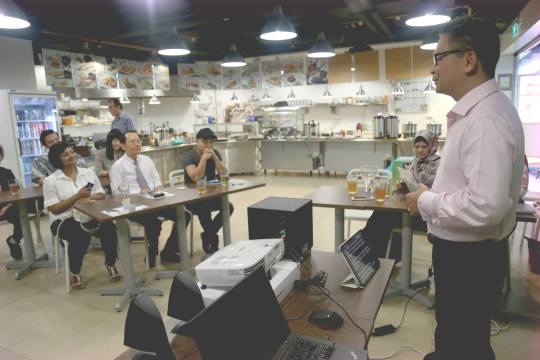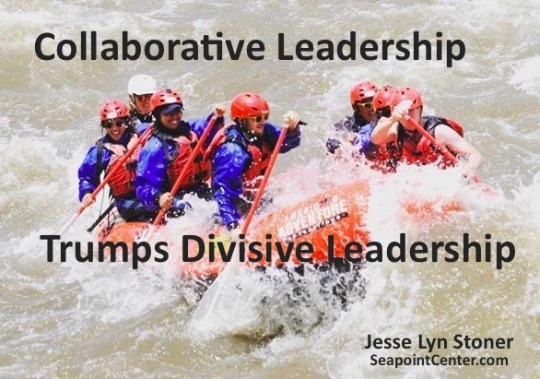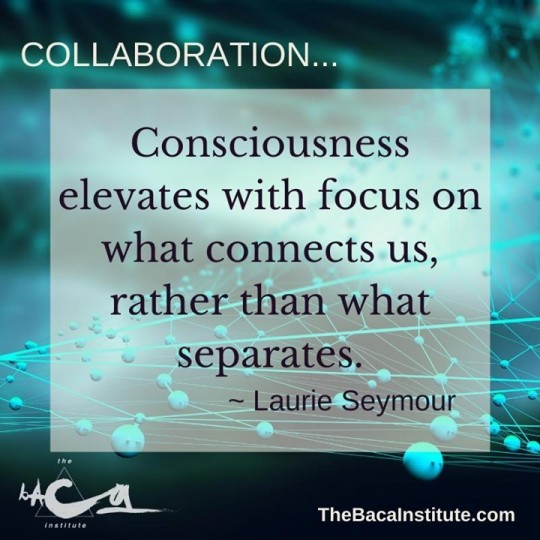#CollaborativeLeadership
Explore tagged Tumblr posts
Text

ICYMI: Fractional COO and Chief of Staff Synergy: Driving Team Alignment Through Collaborative Leadership https://kamyarshah.com/fractional-coo-and-chief-of-staff-synergy-driving-team-alignment-through-collaborative-leadership/
0 notes
Text
Unlocking Success in Non-Profits: The Power of Alignment, Collaboration, and Excellence

In the challenging yet rewarding world of non-profit organisations, success is more than just a lofty goal—it’s a necessity to create meaningful, lasting impact. Yet many non-profits struggle with stretched resources, competing priorities, and siloed operations. How can they overcome these challenges to thrive?
The answer lies in embracing three transformative principles: Alignment, Collaboration, and Excellence. By embedding these into their DNA, non-profits can amplify their impact, streamline their operations, and inspire confidence among stakeholders. Let’s dive deeper into the expected outcomes of these principles and explore how to bring them to life in your organisation.
1. Alignment: The Foundation of a Unified Organisation
Alignment is about ensuring everyone in the organisation is working toward the same goal. It begins with defining a clear mission and filters down into every activity, decision, and resource allocation. Without alignment, organisations risk duplication of effort, inefficiency, and confusion.
Expected Outcomes:
Enhanced Organisational Focus: Aligned organisations reduce waste by focusing only on initiatives that advance their mission. A 2020 Bridgespan Group study found that non-profits with aligned priorities spent 40% less time on non-mission-critical activities.
Stronger External Partnerships: When partners, donors, and volunteers see clarity and consistency in your mission, they’re more likely to support you. Non-profits with a clear mission statement raise 50% more funds during campaigns, according to Giving USA.
How to Achieve Alignment:
Craft a Clear Vision Statement: Your mission should be concise, actionable, and inspiring. Avoid jargon and focus on the change you aim to make.
Cascade Goals: Align departmental and individual goals with the organisation’s strategic objectives. Use tools like OKRs (Objectives and Key Results) to maintain transparency.
Communicate Continuously: Share your mission and progress through newsletters, town halls, and team meetings to keep everyone on the same page.
2. Collaboration: Unlocking Innovation and Synergy
The phrase “teamwork makes the dream work” holds especially true for non-profits. Collaboration across departments, and even with external stakeholders, breaks down silos and fosters a culture of shared purpose.
Expected Outcomes:
Accelerated Innovation: Cross-functional collaboration leads to diverse perspectives, creative solutions, and faster problem-solving. Organisations that prioritise collaboration are 1.5 times more likely to develop innovative programs, according to McKinsey.
Stronger Team Morale: Collaboration boosts morale by creating a sense of belonging. Gallup research found that employees who work in collaborative environments are 30% more engaged and 60% more likely to stay with the organisation.
How to Foster Collaboration:
Adopt Collaborative Tools: Use digital platforms like Asana, Slack, or Microsoft Teams to streamline communication and project management.
Host Cross-Departmental Brainstorms: Set up regular ideation sessions where teams can share challenges and co-create solutions.
Celebrate Team Success: Highlight stories of successful collaborations in newsletters or team meetings to reinforce positive behaviour.
3. Excellence: The Standard That Sets Leaders Apart
Excellence in non-profits is not about perfection; it’s about striving to deliver the best possible outcomes with the resources available. It means building systems for accountability, measuring impact, and continuously improving.
Expected Outcomes:
Higher Donor Confidence: When donors see evidence of excellence—whether through program outcomes or financial transparency—they’re more likely to contribute. Charity Navigator reports that transparency and accountability increase donor retention by up to 23%.
Sustainable Impact: Programs designed and executed with excellence lead to long-term benefits for communities served. For example, non-profits that measure and refine their programs achieve a 2x greater return on social investments, according to the Social Impact Exchange.
How to Cultivate Excellence:
Set Benchmarks: Use KPIs to measure program success, such as the number of beneficiaries served, funds raised, or social outcomes achieved.
Invest in Training: Equip your team with the skills and knowledge they need to excel. Partner with training organisations or offer internal workshops.
Encourage Feedback: Regularly survey beneficiaries, staff, and donors to identify areas for improvement and act on their input.
The Ripple Effect: Why These Principles Matter
When alignment, collaboration, and excellence converge, the results are transformative:
Operational Efficiency: Resources are allocated more effectively, ensuring maximum impact.
Stronger Stakeholder Trust: Donors, volunteers, and partners see your organisation as a reliable and effective change agent.
Increased Employee Satisfaction: Teams feel motivated and supported, leading to lower turnover and higher productivity.
One powerful example comes from XYZ Non-Profit, which faced declining donor retention and staff morale. By introducing cross-departmental collaboration tools and aligning goals through quarterly strategy sessions, they increased donor retention by 35% and cut program delivery costs by 20% within a year.
Take the First Step Toward Transformation
Your organisation’s potential to create change is limitless—but achieving it requires focus, teamwork, and a commitment to excellence. That’s where we come in.
Subscribe to our blog today to gain access to:
Expert advice on non-profit leadership and management.
Real-world case studies and actionable strategies.
Exclusive resources to help your organisation excel.
Together, we can redefine what success looks like for non-profits. Let’s create a future where your mission isn’t just a goal but a reality.
🔔 Don't miss out! Follow me for proven strategies and case studies that help non-profits maximize impact, inspire teams, and build trust.
#NonProfitLeadership#LeadershipMatters#NGOLeadership#InspirationForChange#LearnAndLead#SubscribeForImpact#ImpactfulLeadership#MakingADifference#CollaborativeLeadership
0 notes
Text
A New Era of Collaboration: Participative Management and Strategic HRM in the 20th Century

The early 20th century witnessed significant developments in how companies approached Human Resource Management (HRM), culminating in a shift from tactical personnel management to a more strategic and participative approach. The emergence of participative management, the professionalization of HRM, and the alignment of human resources with overarching corporate goals were driven by the need to address labor unrest, employee turnover, and the rapidly evolving industrial environment. This essay delves deeper into the origins of these developments, examining the move toward strategic HRM, participative management, and the supporting infrastructure that helped solidify HRM’s role in modern business.
The Strategic Nature of HRM in the 1920s
One of the key shifts during this era was the recognition that HRM could no longer be confined to the lower ranks of corporate management, where personnel staff managed day-to-day issues such as recruitment, wages, and employee welfare. Instead, companies began to realize that HRM needed to be aligned with the company’s strategic goals and overseen at the highest executive levels. This shift was articulated in influential articles of the time, such as Hotchkiss's 1923 piece in the Harvard Business Review, where HRM was described as a function that pervades all departments, rather than being siloed in a single unit. Hotchkiss argued that successful HRM must serve as an integrating force across the entire business, rather than a segregated or reactive department.
This strategic vision for HRM reflected the growing understanding among business leaders that labor relations and employee management were critical to long-term business success. For instance, during the 1920s, companies such as General Electric (GE) and Western Electric implemented wide-reaching HRM programs designed not only to manage labor unrest but to foster employee involvement and commitment. GE, in particular, began to integrate employee feedback mechanisms and shop committees to give workers a voice in operational decisions. This participative management model was an early form of what would later be termed "employee involvement," reflecting a shift towards collaborative labor-management relations rather than the top-down models of earlier periods.
Participative Management and Employee Involvement
Participative management, as it developed in the 1920s, was a response to the increasing complexity of industrial organizations and the need for companies to stabilize their workforces amidst growing labor militancy. By allowing employees to participate in decisions that affected their work, companies aimed to reduce the likelihood of strikes, boost productivity, and improve morale.
One notable example of participative management in action during this period was at Western Electric, where the famous Hawthorne Studies were conducted between 1924 and 1932. These studies, led by Elton Mayo, examined the effects of workplace conditions on employee productivity and morale, but they also revealed the importance of social relations and employee involvement in the workplace. The results demonstrated that when workers felt that their opinions and well-being were valued, productivity improved, a finding that laid the foundation for the human relations movement in management. Western Electric’s decision to implement worker committees and provide employees with a greater say in operational matters marked a shift from the traditional authoritarian model of management towards a more participative one.
The strategic implementation of HRM programs was not limited to the United States. In the UK, for example, companies like Rowntree's and Cadbury were early adopters of participative management techniques. Both companies had a long history of paternalistic welfare practices, but by the 1920s, they were experimenting with employee representation schemes. Cadbury’s introduced workers’ councils where employees could discuss grievances and suggest improvements, a practice designed to foster a sense of inclusion and mitigate the adversarial relationship between labor and management.
The Development of HRM Infrastructure
The 1920s also saw the growth of an infrastructure that supported the professionalization of HRM. Journals, associations, consulting firms, and university programs dedicated to HRM began to emerge, reflecting the increasing recognition of HRM as a critical component of corporate strategy.
In the United States, the foundation of the National Personnel Association in the early 1920s (which would later become the American Management Association) signaled the growing importance of HRM as a professional field. This association, along with others such as the American Society for Personnel Administration (founded in 1948), provided a forum for HR professionals to share best practices, develop new theories, and advocate for the role of HRM in business.
University programs in HRM also began to proliferate during this time. Institutions such as Harvard University and the University of Chicago introduced courses on industrial relations, labor economics, and personnel management, helping to create a cadre of trained professionals who could bring a more scientific approach to managing human resources. Consulting firms specializing in labor relations, such as A.T. Kearney, also began offering their services to businesses seeking to improve their HR practices.
In Europe, similar developments were taking place. In the UK, for example, the Institute of Labor Management was founded in 1931, reflecting the growing professionalization of HRM. This institute played a crucial role in promoting research and education in HRM, helping to create a more formalized and strategic approach to labor relations across British industry.
The Influence of Economic and Social Factors
The shift towards strategic HRM and participative management in the 1920s was not purely a business-driven phenomenon. It was also influenced by broader economic and social factors, particularly the labor unrest that characterized the post-World War I period. The Bolshevik Revolution in Russia in 1917 had raised fears of a similar worker uprising in capitalist countries, and this concern was exacerbated by the wave of strikes and labor unrest that swept through the United States, the UK, and other industrialized nations in the years following the war.
Companies recognized that if they were to maintain industrial peace and avoid government intervention, they needed to address the underlying causes of worker discontent. This led to the development of HRM programs that went beyond mere welfare work to include mechanisms for employee involvement and participation. At the same time, the growing influence of trade unions, particularly in industries such as steel, coal, and automobiles, pressured companies to take a more strategic approach to labor relations.
For example, the U.S. Steel Corporation, one of the largest employers in the United States at the time, faced significant labor unrest throughout the 1920s. In response, the company developed a comprehensive HRM strategy that included not only improved wages and working conditions but also employee representation on shop committees and other decision-making bodies. This approach helped to reduce strikes and improve labor-management relations, demonstrating the value of a strategic approach to HRM.
Conclusion
The development of HRM in the 1920s marked a critical turning point in the evolution of modern labor management practices. Companies began to recognize that managing labor relations required more than just tactical, day-to-day interventions; it needed to be integrated into the broader strategic goals of the organization. Participative management, employee involvement, and the professionalization of HRM through the creation of associations, journals, and university programs were all part of this shift.
The real-world examples of companies like Western Electric, GE, Cadbury, and U.S. Steel demonstrate how these new approaches to HRM were implemented in practice, often with significant benefits in terms of employee productivity, morale, and labor peace. As HRM continued to evolve throughout the 20th century, the foundations laid in the 1920s helped shape the strategic, participative, and professional nature of HRM today.
#ParticipativeManagement#StrategicHRM#20thCentury#HRMHistory#CollaborativeLeadership#PeopleCentricLeadership#DemocraticWorkplace#HumanPotential#CommandAndControl#ManagementTheories
0 notes
Text
Embracing the Unity of Existence: Exploring Advaita Vedanta in Spirituality and Business

In the vast landscape of spiritual philosophies, Advaita Vedanta stands out as a profound exploration of the unity of existence. Rooted in ancient Indian wisdom, Advaita Vedanta offers insights that not only deepen our understanding of spirituality but also have the potential to transform the way we approach our professional lives. In this exploration, we delve into the core concepts of Advaita Vedanta, examining its relevance to both personal and professional growth, and provide practical tools for integrating its principles into daily routines.
Understanding Advaita Vedanta:
At the heart of Advaita Vedanta lies the concept of non-duality (advaita), which asserts that there is ultimately no separation between the individual self (Atman) and the universal consciousness (Brahman). According to this philosophy, the perceived multiplicity of the world is an illusion (maya), and true reality is the undivided, infinite consciousness.
This realization of unity transcends religious boundaries and speaks to the essence of spirituality. It invites us to look beyond the surface-level differences and recognize the interconnectedness of all beings. By acknowledging the inherent oneness of existence, Advaita Vedanta fosters a sense of deep inner peace and compassion.
Implications for Business Professionals:
In the realm of business, the principles of Advaita Vedanta can offer invaluable insights. Recognizing the unity of existence encourages a shift in perspective from competition to collaboration. Rather than viewing colleagues and competitors as separate entities vying for limited resources, business professionals can embrace a mindset of abundance and interconnectedness. This shift can foster innovation, cooperation, and collective success.
Moreover, practicing Advaita Vedanta can enhance leadership qualities such as empathy, authenticity, and inclusivity. Leaders who embody these qualities inspire trust and create environments where individuals feel valued and empowered to contribute their unique talents.
Toolkit for Integration:
To apply the principles of Advaita Vedanta in daily life, consider the following toolkit:
Self-Inquiry: Take time for introspection and self-inquiry to deepen your understanding of your true nature. Reflect on the question "Who am I?" to unravel layers of conditioned identity and connect with the essence of being.
Mindfulness Practice: Cultivate present-moment awareness through mindfulness meditation and mindful living. Pay attention to the interconnectedness of all phenomena, from the breath flowing in and out of your body to the intricate web of relationships in your professional and personal life.
Compassionate Communication: Practice empathetic listening and compassionate communication in your interactions with colleagues, clients, and stakeholders. Recognize the inherent dignity and worth of every individual, irrespective of their role or status.
Collaborative Leadership: Embrace a leadership style that fosters collaboration, trust, and shared purpose. Lead by example, demonstrating humility, integrity, and a commitment to serving the collective good.
Gratitude Practice: Cultivate an attitude of gratitude for the abundance that surrounds you, both in your professional achievements and in the simple joys of everyday life. Express appreciation for the contributions of others and acknowledge the interconnected web of support that sustains you.
Service-Oriented Mindset: Shift from a mindset of self-interest to one of service and contribution. Seek opportunities to uplift others and make a positive impact in your professional sphere and beyond.
By integrating these practices into your daily routine, you can embody the principles of Advaita Vedanta and experience profound shifts in consciousness, both personally and professionally. Embracing the unity of existence opens the door to a deeper sense of fulfillment, purpose, and interconnectedness in all aspects of life.
#AdvaitaVedanta#SpiritualityInBusiness#UnityOfExistence#BusinessPhilosophy#MindfulnessLeadership#NonDuality#BusinessTransformation#InnerPeace#Interconnectedness#ProfessionalGrowth#UnityInDiversity#LeadershipMindset#AbundanceMindset#CollaborativeLeadership#ConsciousBusiness
1 note
·
View note
Text
"True leadership is about creating a vision that others want to follow, not about asserting authority." - Unknown
#VisionaryLeadership#InspireToLead#BeyondAuthority#LeadershipGoals#CollaborativeLeadership#LeadingWithVision#InspirationOverImposition#TrueLeadershipTraits
0 notes
Text
Top 5 Leadership Trends for 2024- Navigating the future with wisdom

In today’s ever-evolving business landscape, leadership is not just about authority; it’s about adaptability, authenticity, and fostering collaboration. As we step into 2024, the leadership landscape is poised for significant changes. Here are the top 5 leadership trends that will shape the year ahead: - https://kabirlearning.in/top-5-leadership-trends-for-2024-navigating-the-future-with-wisdom/
#LeadershipTrends#BusinessEvolution#Adaptability#AuthenticLeadership#CollaborativeLeadership#2024Leadership#BusinessLandscape#LeadershipSkills#FutureOfWork#ProfessionalDevelopment#leadership
0 notes
Text
Bringing in an Integrator to Hold Yourself And Your Team Accountable

🌟Visionary leaders have the most incredible ideas. What separates one incredible idea from the next is the ability to make it happen. In other words, in order to make it all work, business owners need to ensure that teams are held accountable for their actions; without this crucial step, business goals would be impossible to reach. So, while business owners should invest time and resources into developing their business entrepreneurs’ skills, they need not forget that the final piece of the puzzle – holding those same individuals accountable – is equally important. It may not be the most glamorous task in business management, but it could be key to success! Let’s talk about how to bring that missing puzzle piece to your business by bringing in your company’s first Integrator.
#IntegratorRole#AccountabilityMatters#TeamAccountability#LeadershipAccountability#IntegratorLeadership#AccountabilityCulture#TeamProductivity#BusinessIntegration#CollaborativeLeadership#TeamEffectiveness
0 notes
Text

Icons of Change Awards 2025
Sustainable Development Goal (SDG) 17: Partnerships for the Goals
Excellence in Collaborative Media and Mentorship Award
Noel “Owen” Formento
#SDG17 #PartnershipsForTheGoals #CollaborativeLeadership #MediaInnovation #Mentorship #NoelOwenFormento
0 notes
Text

"Learning Together to Leading Together" philosophy, we acknowledge that leadership is not a solitary endeavor but a collective effort.
👉 Visit our website: www.birtikendrajituniversity.ac.in/ for more details ⬅️"
;;;;;;;;;;;;;;;;;;;;;;;;;;;;;;;;;;;;;;;;;;;;;;;;;;;;;;;;;;;;;;;;;;;;;;;;;;;;;;;;;
#LeadingTogether#CollaborativeLeadership#ContinuousLearning#GrowthMindset #EmpoweringLeadership#collectivewisdom#InclusiveLeadership#leadershipdevelopment#CollaborationMatters#TeamworkMakesTheDreamWork#LeadershipJourney#LeadershipSkills#LeadershipMatters#LeadershipInspiration#LeadershipMotivation#LeadershipTraining#LeadershipMindset#LeadershipExcellence#LeadershipGoals#LeadershipSuccess
#manipuruniversity#career#birtikendrajit#studyinternational#education#manipur#university#btu#bestuniversity#learning
0 notes
Photo

Leaders need to adjust to accommodate for remote teams. https://afrotech.com/how-to-resolve-conflict-on-remote-teams #meet #locations #remote #besttalent #collaborativeleadership #meetings #futureofwork #remotework #teamcalendar #global #timezones (at TeamCalendar AI) https://www.instagram.com/p/B5g_lcVnxtd/?igshid=fgdlmw7one7
#meet#locations#remote#besttalent#collaborativeleadership#meetings#futureofwork#remotework#teamcalendar#global#timezones
1 note
·
View note
Text

Fractional COO and Chief of Staff Synergy: Driving Team Alignment Through Collaborative Leadership https://kamyarshah.com/fractional-coo-and-chief-of-staff-synergy-driving-team-alignment-through-collaborative-leadership/
0 notes
Photo

A guide to collaborative leadership | Lorna Davis Source | YouTube | TED What's the difference between heroes and leaders? In this insightful talk, Lorna Davis explains how our idolization of heroes is holding us back from solving big problems -- and shows why we need "radical interdependence" to make real change happen https://human-engineers.com/wp-content/uploads/2020/02/HR-V3-12.jpg https://human-engineers.com/a-guide-to-collaborative-leadership-lorna-davis/?feed_id=12267&_unique_id=61092d0a1e72e https://human-engineers.com/a-guide-to-collaborative-leadership-lorna-davis/?feed_id=12267&_unique_id=61092d0a1e72e
#Change#Collaborativeleadership#Difference#Heroes#Insightfultalk#Leaders#Leadership#LornaDavis#Qualities#Radicalinterdependence#Solvingbigproblems#TED#TEDConference#YouTube
0 notes
Photo

(via 8 Principles of Collaborative Leadership | Jesse Lyn Stoner)
By Jesse Lyn Stoner
Anyone can be a collaborative leader — no matter whether you are the president, a mid-level manager or a front-line supervisor…. no matter whether you are in government, a large corporation, a small business, or a non-profit.
On the other hand, just because you’ve been elected or assigned the role of leader, does not mean you are providing leadership. You can force people to do what you say through coercion, power and authoritarianism, but that’s not leadership.
Leadership only occurs if you influence the direction people are going and unite them in accomplishing a common goal. Leadership is the result of a social contract, an understood agreement between those who attempt to influence (lead) and those who follow.
The principles of collaborative leadership center on sharing leadership. Leadership is not a role assigned to a specific individual. The person who is best prepared to advance the mission at any given moment is the one who steps forward to provide leadership. Each moment holds a leadership opportunity.
Organizations and communities are best served when each member is prepared to provide leadership when they are able and is committed to be a responsible follower at other times. Being a responsible follower does not mean being a “sheep.” When those providing leadership are creating divisiveness and harming the community, it is the responsibility of the followers to call it out.
Collaborative leadership is the most effective way to move collectively toward a positive future. But it requires a willingness to set aside one’s desire for power and control.
Unfortunately there are too many people in leadership positions that are only concerned with their own needs, driven by the desire for power and control. They create divisiveness, not collaboration, pitting groups of people against each other. The result of this divisive leadership is polarization – an “us versus them” mentality, with winners and losers. The end result is personal gain for those in authority positions, and unfortunately as history shows us, in the long run, the organization or community suffers from the poor decision-making and lack of concern for the greater good.
If you are interested in becoming a collaborative leader, these principles of collaborative leadership will set a strong foundation.
1. An inclusive vision is the glue.
When your team or organization has a shared vision or clear purpose that benefits all stakeholders, it can serve as the guiding force and the glue and you can give up the idea of being in control. According to John Chambers, CEO of Cisco, “You cannot create collaboration if you think leadership is about control.” He says making the shift from a “command and control” mindset is not easy, but is crucial to creating engaged workplaces.
2. Create networks, not boundaries.
Collaborative leaders understand that one of their more important roles is to create communities – but not communities with closed boundaries. When you consider all your stakeholders, their myriad of relationships and interdependencies, it becomes pointless to act as if your team or organization is a closed system. What happens in one area affects other areas you could never anticipate. Distributing power and pushing decision-making authority to those as close to the customer as possible makes your organization smarter, more flexible, and more resilient.
3. Focus more on asking good questions than giving the right answers.
Crucial information is held in too many different places for you to be able to have all the answers. Instead of seeing your role as providing answers, learn to ask really good questions. A good question can be worth a lot more than a quick answer because it opens up possibilities for creative new ideas and solutions. When you learn to tolerate ambiguity, great solutions arise from unexpected sources.
4. Open the flow of information.
Technology has changed the landscape. Information is accessible, whether you want to share it or not. But that’s good news because organizations benefits when information is freely shared. People can do their job better when they have easy access to the information they need. And it becomes possible to create productive partnerships with other organizations, changing a competitive advantage to what Rosabeth Moss Kanter calls a collaborative advantage.
5. Involve people in decisions that affect them. People want their organizations to be successful, and when given an opportunity to participate in decisions affecting them, they bring their best thinking and contribute fully. Through involvement, people develop deeper understanding of the issues and goals and become more committed to implementing decisions. Inviting them to actually participate in decision-making creates stronger buy-in, builds their leadership capabilities for the future, and increases their level of trust in each other and in leadership.
Creating opportunities for involvement does not mean decisions need to be made by “group think.” When people feel their viewpoint has been considered and they understand the rationale for a decision, they will support it because respect and trust are byproducts of dialogue.
6. Seek and utilize diversity.
Diversity is the bedrock of innovation. When diverse perspectives are combined, discussions are richer, more robust, and more relevant and we find better solutions. Conflict and creative disagreement, when focused on issues and not personalities, serve as the “grain of sand in the oyster” to produce creative new ideas, approaches and solutions.
7. Align your personal and public behavior.
Who you are as an person is not different from who you are as a leader. Act as if everything you do will become public knowledge, because it can and it will. Values-driven leadership is essential. You can’t hide your morals behind closed doors. It might once have been possible to get away with questionable ethics, but there’s nowhere to hide anymore.
8. Treat people like human beings, not human resources.
People are not assets. They are human beings. Without them, there is no organization. The health and well-being of your team or organization is dependent on the health and well-being of its members.
[Entire post — click on the title link to read it on Jesse Lyn Stoner’s blog.]
***
You’re working on your goals, and your team’s goals. We can help you spring into action and develop a real plan that you can implement in a smart way, so you’ll start seeing results immediately, before you feel discouraged. If you feel that you’ve already gone off-track, we can help you get your focus, courage, and motivation back.
At Creative Sage™, we often coach and mentor individual clients, as well as work teams, in the areas of change management, building resilience, making personal, career or organizational transitions — including to retirement, or an “encore career” — and facilitating development of leadership, creativity and collaboration capabilities. We also work with clients on work/life balance, focus and productivity issues.
We guide and mentor executives, entrepreneurs, intrapreneurs, artists, and creative professionals of all generations, to help them more effectively implement transition processes, and to become more resilient in adjusting to rapid changes in the workplace — including learning effective coping techniques for handling failure, as well as success. We work with on-site and virtual teams.
Please do not hesitate to contact us if you would like to discuss your situation. You can also call us at 1-510-845-5510 in San Francisco / Silicon Valley. Let’s talk! An initial exploratory phone conversation is free. When you talk with me, I promise that I’ll always LISTEN to you with open ears, mind and heart, to help you clarify your own unique path to a higher vista of success.
~Cathryn Hrudicka, Founder, CEO and Chief Imagination Officer of Creative Sage™, Executive Coach, Consultant, and Mentor.
***
2 notes
·
View notes
Video
youtube
What did the PISA 2018 global competence test assess, and why is it impo...
How are you elevating the conversation to engage in a more meaningful way, or has your education handicapped you and your next generation in the past? #sustainablefuture #collaborativeleadership #futurethought #andragogyprinciples
0 notes
Photo

I posted about collaboration last week, calling out many of the transformational elements. I‘d like to expand on a few of those over the coming weeks. “Consciousness elevates with focus on what connects us, rather than what separates.” I could as easily have written, “collaboration elevates with focus on what connects us.” It’s not about how we are the same or different. It is about recognizing that our common humanity transcends any attempt at division or separation. Our differences fuel collaboration. To embrace what makes us unique, and to bring that to the table, while, at the same time, appreciating the energetic source that is alive and well within each of us: this is the dance of true collaboration. We get to experience the particular realm that is expressed through each of our collaborators, bringing into our own being something that we could not access any other way. Each of us vibrates in our personal “key”. What kind of music could we make together? Bottom line: collaboration expands consciousness. Creative intelligence (consciousness in action) initiates solutions. #Consciouscollaboration #collaborativeleadership #transformationalinnovation #creativeintelligence #vibration #collectivecreativity #futurist #innovation #consciousness #connectionnotseparation #alchemy #wisdom #transformation
0 notes
Text
Tweeted
Networks of trusted relationships and shared values show solidarity when systems break down. #solidarity #systemsthinking #networksolutions #collaborativeleadership https://t.co/6cg65AmUHV
— Ruth Rominger (@RURomin) May 20, 2020
0 notes